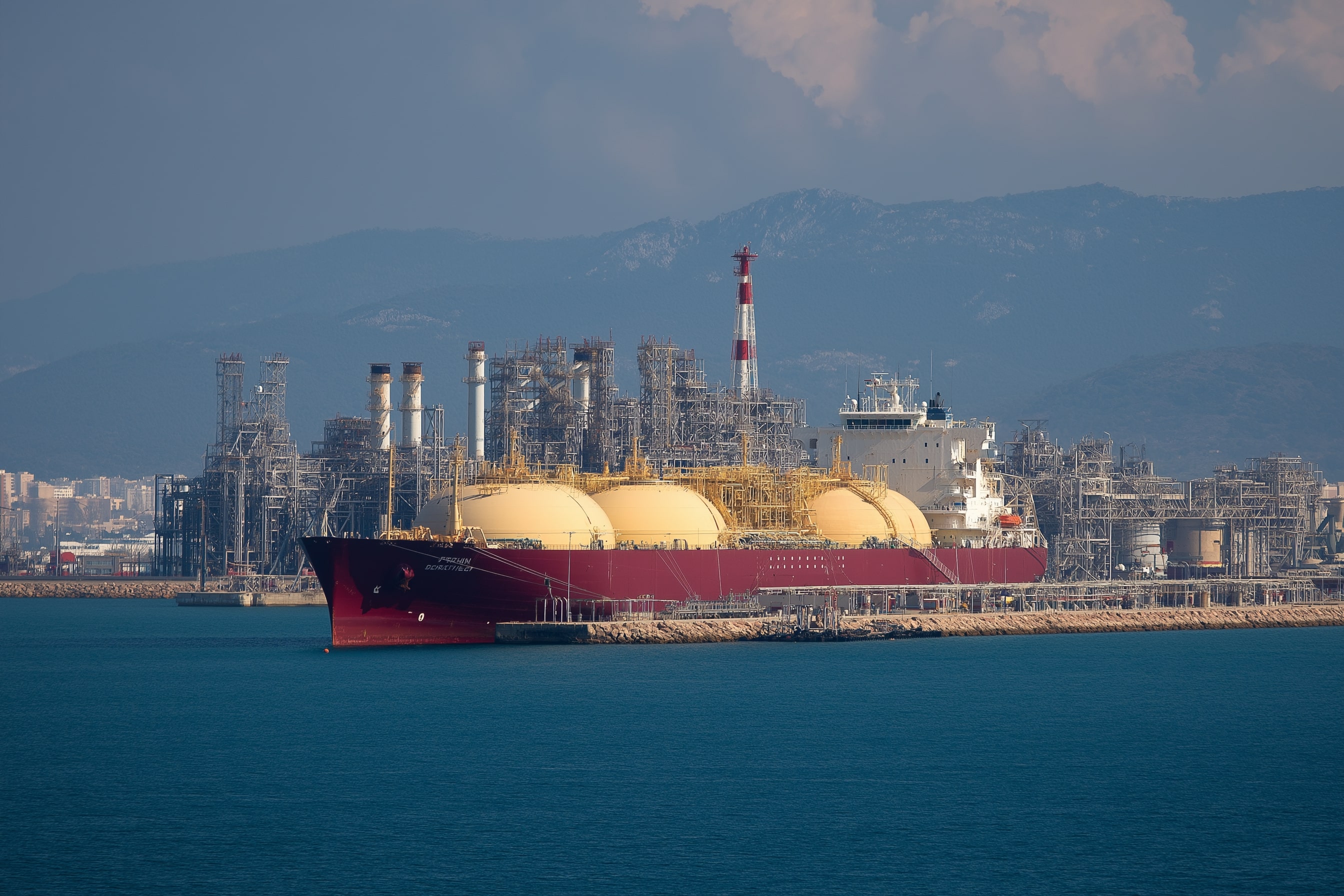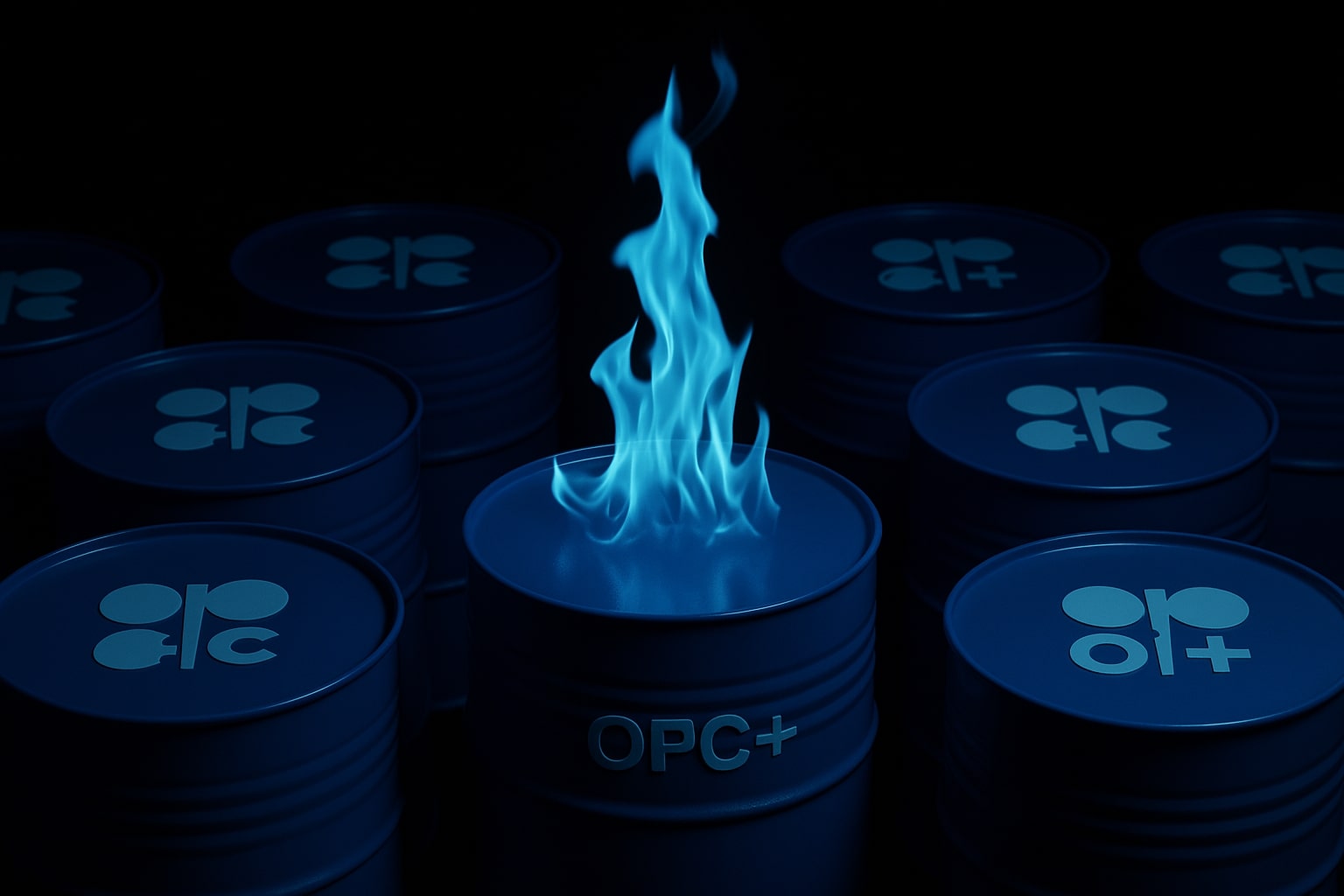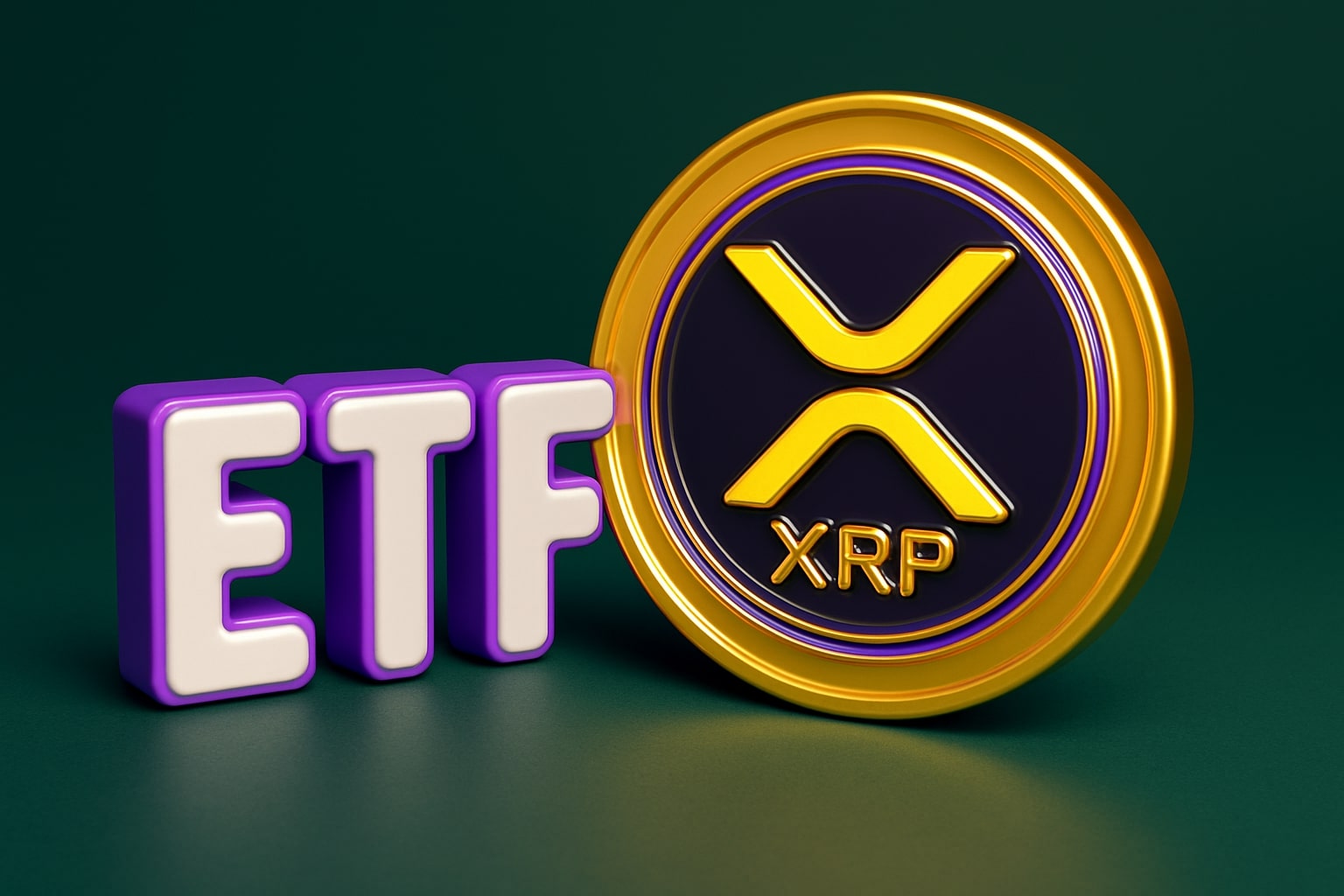
Natural Gas Price (NG=F) Drops to $4.39 as Record Output and Global LNG Flood Weigh on Futures
With European TTF under €30/MWh, U.S. production near 105 Bcf/d, and fading cold forecasts, natural gas prices test $4 support while traders brace for January contract rollover and muted winter demand | That's TradingNEWS
Natural Gas (NG=F) Contracts Face Volatility as Production Outpaces Demand and Global LNG Flows Pressure Prices
Short-Term Futures Under Pressure Amid Expiration and Weather Shifts
Natural Gas (NG=F) futures experienced pronounced intraday volatility as the December contract approached expiration, sliding 15.9 cents to $4.39/MMBtu after touching a low of $4.267/MMBtu. This decline reflects the interplay of elevated U.S. production and mixed winter weather signals. Despite earlier upward momentum driven by short covering and colder forecasts, traders have reverted to a defensive posture ahead of the January rollover. The Henry Hub benchmark, which had tested highs above $4.60/MMBtu last week, remains trapped in a consolidation range with limited bullish conviction. Production levels remain stout, offsetting moderate demand expectations as heating degree days undershoot early seasonal averages. Traders describe the market as oversupplied, with end-of-November production averaging 105.4 Bcf/d, near record highs, as Appalachian and Permian basins continue to expand output despite price softness. The prompt-month contract remains technically supported near $4.00/MMBtu, where the 50-day EMA converges, yet persistent storage comfort has kept rallies capped below $4.70/MMBtu.
European Market Eases as LNG Imports Surge and TTF Prices Slide Below €30/MWh
Across Europe, natural gas benchmarks followed a parallel downward trajectory. The Dutch Title Transfer Facility (TTF) price dropped below €30 per megawatt-hour for the first time since spring 2024, down sharply from €40/MWh levels seen during the summer. Margus Kaasik, CEO of Elenger Grupp, attributed the decline to a 30% year-on-year surge in Liquefied Natural Gas (LNG) cargo arrivals and expanding global liquefaction capacity expected in 2026–2027. This structural oversupply has diminished the geopolitical risk premium that dominated pricing during 2022–2024. Europe’s mild, windy conditions through November suppressed short-term demand, allowing storage levels to remain well above the five-year average. Though the region continues to prepare for colder January conditions, the near-term outlook is decisively bearish. Elenger confirmed its residential price at €0.54 per cubic meter for December and January, signaling confidence in stable wholesale access. Diplomatic progress in Ukraine-Russia negotiations has further reduced supply-risk sentiment, amplifying downside pressure on TTF futures and indirectly influencing global LNG benchmarks that shape NG=F valuations.
Turkish Spot Market Reflects Regional Softness with Persistent Lira Pressure
In Türkiye, spot gas prices also demonstrated consistent weakness, mirroring European fundamentals. On November 24, 2025, Energy Exchange Istanbul (EXIST) data showed 1,000 cubic meters of natural gas priced at 14,373.73 Turkish liras (≈ US $338.6 at 42.44 liras per USD). Daily trade volume dropped 44.5% to 3.44 million liras, down from 6.2 million liras a day earlier. Pipeline gas inflows were measured at 185.6 million cubic meters, maintaining a strong supply buffer that limited any upside potential. These regional dynamics reinforce a broader oversupply narrative across Eurasia: steady import flows, weak industrial draw, and mild weather collectively pushing short-term benchmarks lower. With the lira maintaining historical weakness, Turkish buyers face relatively stable local prices despite dollar-denominated declines, but export-linked LNG revenues remain pressured by narrowing global spreads.
U.S. Market Balances Record Production Against Expiration-Driven Short Covering
As traders rolled from December to January contracts, natural gas futures witnessed alternating sessions of sharp short covering followed by renewed liquidation. Production resilience near 105 Bcf/d continued to cap any meaningful breakout. The Energy Information Administration (EIA) reported an inline weekly storage withdrawal, offering no fresh bullish impulse. Total inventories remain roughly 5% above the five-year average, providing a robust cushion for winter. The El Paso Waha Pool traded near $1.445, while Kingsgate stood at $1.38, and Iroquois Zone 2 sank to –$0.305, revealing intense regional differentials across U.S. hubs. West Texas Waha again flirted with negative prints due to pipeline constraints, underscoring the persistent infrastructure imbalance between supply regions and demand centers. Technical traders identify $4.00/MMBtu as the key inflection point—holding above preserves medium-term bullish structure, while a decisive breach could trigger a retreat toward $3.70/MMBtu, filling the November contract gap.
Seasonal Demand and Weather Volatility Define Short-Term Trajectory
Weather continues to dominate sentiment. While early-winter forecasts hinted at colder bursts across the Midwest and Northeast, updated models now show milder patterns extending into early December. This has delayed the expected surge in heating demand, muting price response even as inventories begin seasonal draws. Analysts suggest any renewed cold snap could quickly tighten balances, given U.S. export commitments averaging 14.5 Bcf/d through LNG terminals, primarily to Europe and Asia. However, the market’s recent inability to sustain rallies above $4.60 implies exhaustion among speculative longs. Traders remain wary of fading spikes ahead of the January 2026 contract, with many targeting re-entry around $4.10–$4.20 once consolidation stabilizes.
Read More
-
MSTY ETF Collapses to $6.94 as Microstrategy (MSTR) Stock $543-to-$172 Crash and Bitcoin’s $85K Slide Trigger Yield Trap
25.11.2025 · TradingNEWS ArchiveStocks
-
XRP ETFs Record $164M Inflows as XRPI and XRPR Hold Firm at $12.86 and $18.07 with XRP Rebounding to $2.19
25.11.2025 · TradingNEWS ArchiveCrypto
-
Oil Price Forecast - Oil Prices Crash as Ukraine Peace Deal and Supply Surge Ignite Global Oil Selloff
25.11.2025 · TradingNEWS ArchiveCommodities
-
USD/JPY Price Forecast - Dollar to Yen Drops to 156.05 as Weak U.S. Data Shake Dollar Strength
25.11.2025 · TradingNEWS ArchiveForex
Macro Signals and LNG Trade Expansion Reshape Medium-Term Outlook
Global LNG exports expanded 4.8% year-on-year in January–September 2025, driven by North American and Qatari capacity growth. Although Asian imports declined marginally, Europe, the Middle East, and North Africa recorded strong gains as pipeline supply diversification advanced. This export expansion aligns with expectations of persistent competition for cargoes, constraining U.S. domestic price recovery. The correlation between TTF and Henry Hub remains firm—European softness limits upside for NG=F despite localized weather rallies. From a macro lens, easing geopolitical tensions and ongoing investment in renewable integration have eroded the risk premium that previously lifted gas prices. The global market now prices natural gas as an abundant, strategically oversupplied commodity, with cyclical spikes increasingly tied to transient cold events rather than systemic shortages.
Technical Outlook and Investment Stance on NG=F
From a structural standpoint, NG=F remains within a descending channel that began after February’s $12/MMBtu winter spike. The failure to reclaim the $5.00/MMBtu zone signals persistent bearish momentum. Momentum indicators show RSI stabilizing near 47, while MACD remains negative but flattening, suggesting potential for near-term consolidation before any recovery attempt. Immediate support rests at $4.00, with secondary support at $3.68. Resistance is established near $4.75–$4.80, where sellers have repeatedly capped rallies. Fundamentally, elevated production, strong storage, and weak weather-driven demand outweigh the modest bullish triggers from short covering or LNG maintenance outages. Long-term value buyers may find accumulation opportunities only if prices revisit the $3.50–$3.70 range, where risk-reward dynamics improve ahead of late-winter consumption peaks.
Verdict: SELL/NEUTRAL — Natural Gas (NG=F) remains pressured by record supply, weak European benchmarks, and mild weather. Until sustained storage draws or production cuts emerge, upside remains limited and rallies should be sold into rather than chased.



















